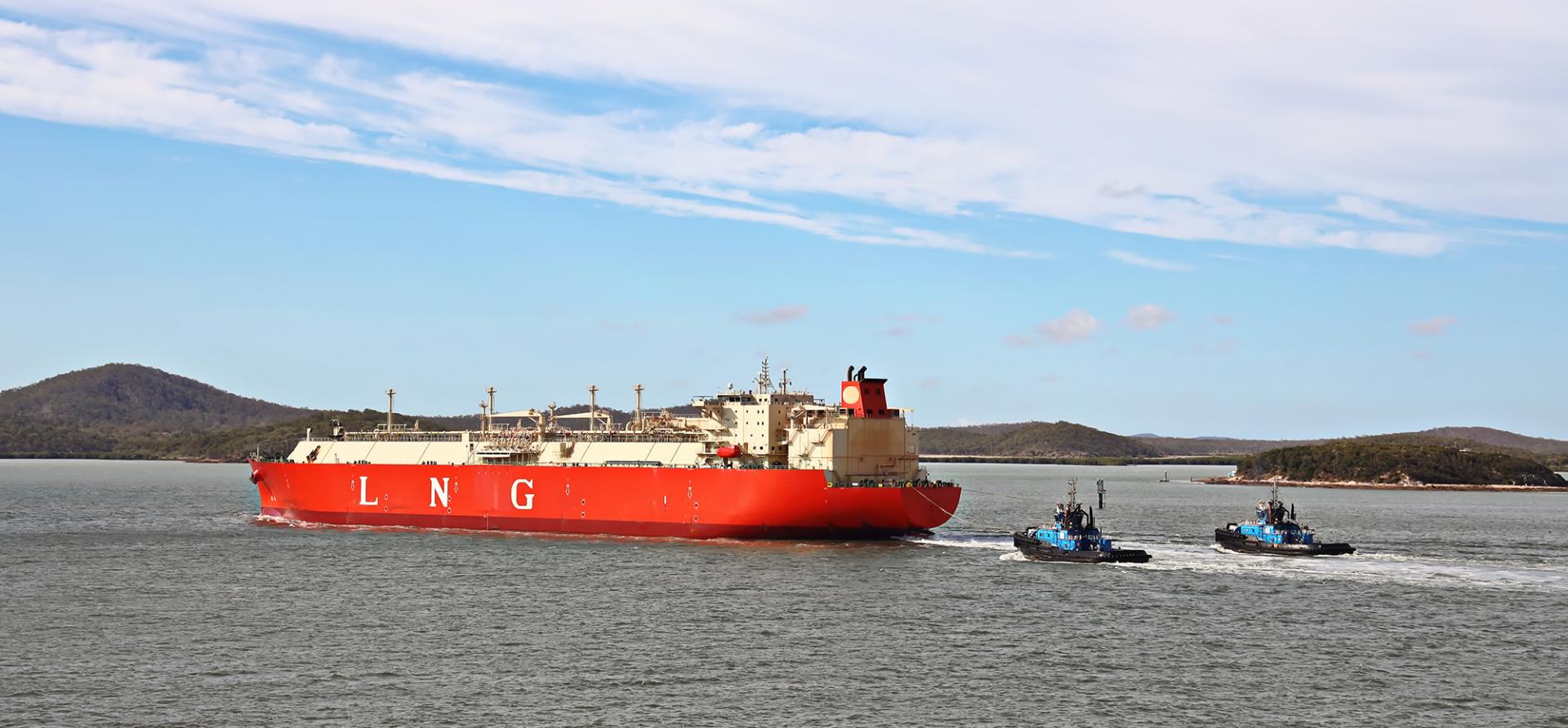IEEFA Comments: Venture Global Plaquemines LNG expansion proposal
Download Full Report
View Press Release

Key Findings
The Federal Energy Regulatory Commission (FERC) has failed to fully consider the ramifications of an LNG plant expansion in Plaquemines Parish, Louisiana
A 24/7 construction schedule and additional traffic caused by the Venture Global Plaquemines LNG expansion would adversely affect local residents
FERC also should consider the changes in global demand for additional LNG export capacity, which have changed in the wake of Russia’s invasion of Ukraine
The Institute for Energy Economics and Financial Analysis (IEEFA), a nonprofit organization focused on research and analysis of global energy markets and trends, provides the following comments in response to the Notice of Scoping Period Requesting Comments on Environmental Issues and Notice of Preparation of an Environmental Assessment for the Plaquemines LNG Amendment, Docket Nos. CP17-66-001, CP17-67-001. These comments are intended to address new or omitted information that was either not available or not considered by the applicant or the Federal Energy Regulatory Commission (FERC) when the final Environmental Impact Statement (EIS) for the Plaquemines LNG Project was authorized by FERC on September 30, 2019.
The proposed amendment by Plaquemines LNG requests additional workspace, additional traffic volumes, additional personnel, and the implementation of a 24-hours-per-day and 7-days-per-week construction schedule. All requests are increases relative to levels authorized in the final EIS for the project. FERC needs to conduct a more rigorous analysis of both the rationale and the potential effects of these additional staffing levels and include data that was not available at the time of the final EIS authorization.
The assumptions about global demand for additional LNG export capacity were based on long-term relatively low gas price conditions that existed in 2019. Global demand conditions have changed in the wake of Russia’s February 2022 invasion of Ukraine and the ensuing volatile commodity prices for both oil and gas.
FERC should also analyze the potential impact of the proposed project change on traffic fatality risks. The final EIS uses traffic fatalities per annum as a reference point for comparison to accidental deaths caused by natural gas distribution and transmission lines. The EIS does not, however, address the project-related traffic changes, including construction workforce travel and materials transport to or from the facility and a 24-hour work schedule, which may increase traffic risks for a small community’s roadways.
Waning future global demand for LNG and increased traffic fatality risks are factors that need greater consideration and scrutiny. Both highlight potential detriments, not benefits, to the public interest from the Plaquemines LNG project.
The LNG Export Market May Be Significantly Weaker Than the Applicants Hope
Volatile prices and the knock-on effects of nations considering their energy security strategies have changed the outlook for global LNG demand. Russia’s war on Ukraine and the resulting energy crisis in Europe affected global LNG import patterns and several countries’ perspectives concerning their future dependence on gas for heating and generating electricity. Before the war, global natural gas prices were dramatically lower, and developing economies in Asia were the predominant drivers of LNG demand growth. Since the invasion, gas prices have spiked and LNG shipments to Europe have increased while imports to Asia have slowed.
The losses in Russian pipeline gas to Europe in 2022 prompted the spike in natural gas prices and the diversion of LNG shipments to Europe. The magnitude of the natural gas price surge reflected the premium Europe was willing to pay to secure volumes of imported gas to offset its lost piped gas from Russia.
Europe’s benchmark Dutch Title Transfer Facility (TTF) traded at an average $39.07 per million British thermal units (MMBtu) in 2022. Natural gas prices for the Japan Korea Marker (JKM) in Asia and Henry Hub in the U.S. last year averaged $34 and $6.45 per MMBtu, respectively. The price disparity, about 15% higher on average in Europe compared to Asia, illustrates the profit impetus favoring the routing of more LNG shipments to Europe.
U.S. LNG exporters benefitted, shipping 52 million tons to the continent last year, more than double the 21.5 million tons imported by Europe in 2021. Globally, US exports grew by about 1 billion cubic feet per day to 81.2 million tons in 2022. Overall, Europe imported 124.9 million tons of LNG in 2022, up 59% from the 78.6 million tons imported during the previous year. Conversely, Asian LNG demand fell from 282 million tons (mt) in 2021 to 264 mt in 2022.
Developing nations in Asia felt the pinch of diverted supplies to Europe. Short-term demand responses to abnormally high spot LNG and natural gas prices included substitution (i.e., oil-fired generation, diesel generation, coal-fired generation, and nuclear), mandatory conservation, fewer spot LNG purchases, rolling blackouts, and higher utility bills for consumers. Key importing nations—including China, Pakistan, Bangladesh, India, and Japan—all imported less LNG in 2022 than 2021.
The LNG industry’s long-term growth prospects are not guaranteed. In fact, the demand responses to last year’s high prices have prompted energy forecasters—including Bloomberg, Independent Commodity Intelligence Services (ICIS), and International Energy Agency (IEA)—to all lower their projections for Asian LNG demand growth. These market developments may accelerate over the next several years if prices remain high, reducing the pace of long-term LNG demand growth in the very markets on which the global LNG industry has been relying for projections of overall market growth.
Like Asia, Europe saw decreased gas consumption last year as a consequence of high prices and declining supplies of pipeline gas from Russia. Overall, natural gas consumption fell by 12% across the EU in 2022 due to slowing economic conditions exacerbated by their energy crisis, with demand declining as the year progressed. The continent faces continued declines in Russian gas shipments this year. The EU has responded to this reality with continued improvements in energy efficiency, a rapid increase in the deployment of renewables, an acceleration of the electrification of heat, and consumer behavior changes.
Even as demand growth assumptions may be faltering in both Europe and Asia, the global LNG industry is engaged in a major build-out of new LNG liquefaction capacity. Although global supply additions will be modest through the end of 2024, IEEFA expects 118 MTPA of new liquefaction capacity to come online between 2025 and 2027, with much of that new supply coming from projects in the U.S. and Qatar. In the context of several years of restrained global LNG demand growth and massive increase in supply coming online starting in 2025, the market case for additional LNG production from Plaquemines LNG is weaker than the applicants hope.
To summarize, energy security and geopolitical considerations have created the conditions for increased LNG imports into Europe over the short term. However, they have also spurred long-term measures to reduce overall European gas demand, both through government actions and through the market mechanisms by which consumers have adapted to the higher prices for natural gas and LNG.
The focal point of these reactions is less demand for natural gas, not more. Meanwhile, high LNG prices and supply limits are reducing the pace of demand growth in Asia. Therefore, long-term assumptions should put more weight on the potential for slow growth in global market demand for LNG, and less emphasis on the flexibility that LNG imports provided over the short run. The profile for the fundamentals of natural gas markets would have to look much different than they do today to justify the build-out that LNG exporters wish to fulfill. Also, sustained higher prices for LNG and natural gas are a precursor to stunted future demand for the commodity due to more changes in the market. Expectations set by the current environment for LNG may prove overly optimistic.
Traffic Analysis Focuses on Flow Instead of Risks to Public Health
Transportation safety is an issue that must not be given short shrift. Section 4.9.8.1 of the final EIS, titled “Roadway Transportation,” outlines Venture Global’s Traffic Management Plan for Terminal Site Construction, which presumably would mitigate the impacts of its workforce averaging 3,300 during construction (their assumption) and deliveries generating additional traffic relative to the existing 23,000 population of Plaquemines Parish. The company said it would deploy traffic management strategies that include additional signage; flag people; not re-routing traffic during peak traffic hours; adhering to state and county vehicle weight limits; shuttling and carpooling; limiting on-site construction parking; and clearing excess soil left on roads by heavy trucks. In summary, the impacts that the company addresses through its mitigation plans revolve primarily around traffic congestion.
The EIS section discussing roadway transportation does not analyze traffic accident risks and associated fatalities. Whether the building of an LNG terminal is “consistent with public interest” cannot be fully understood if the risks associated with increased traffic potentially yielding increased traffic fatalities are unknown.
A check of traffic fatalities as reported by the Louisiana Department of Transportation & Development for Plaquemines Parish shows that the number of traffic fatalities in years 2018, 2019, 2020, 2021 and 2022 were one, three, two, three, and five deaths, respectively. Construction on Plaquemines LNG commenced in October 2021. Further analysis should be conducted of local road conditions and traffic fatality risks posed by the proposed increase in activities and the plan to shift to a 24-hour work schedule.
Conclusion
Delegation from the Department of Energy as regulated under Section 7 of the Natural Gas Act of 1938 places responsibility with FERC to authorize siting, construction, expansion, and operation of LNG terminals, with an affirmative decision for each based on consistency with public interest. Today’s shifting global demand outlook, a key determinant of whether an additional LNG export facility will yield local, statewide, or national economic benefits, may not point to the same conclusions as data from four years ago. The significant risk of mismatches between LNG supply and demand, which can lead to volatility in prices and underutilization, calls into question the viability and economic benefit to the public. Also, the proposed change in activity level and work schedule require analysis of impacts on traffic fatality risks. FERC must scrutinize these issues to determine whether or not the project is consistent with the public interest.
















